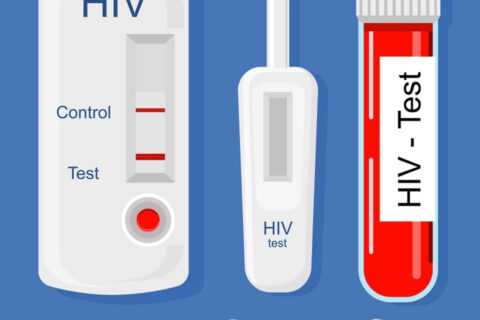July 28th Is World Hepatitis Day
Hepatitis, in one form or another, remains a health problem in the United States and worldwide. Good reason July 28 is set aside as World Hepatitis Day, designed to bring attention to the health risks, prevention, and treatment of the disease.
Various Forms of Hepatitis
There are several different forms of Hepatitis (A, B, C, D, E, F, G, and TT), a viral infection that causes inflammation, infection, and scarring of the liver and can lead to liver cancer and cirrhosis. The causes, severity, duration, treatment and prevention options for Hepatitis are determined by what type of disease is detected. The New York State Health Department indicates these three forms of Hepatitis are the most common found in the United States. Briefly:
HEP A: Hepatitis A is caused by the hepatitis A virus (HAV). This is a highly contagious liver infection normally caused by contaminated food or water or from close personal contact with an infected person. Mild cases often don’t need treatments and most infected persons recover completely with no permanent liver damage. The infection may be diagnosed with a blood test. Hepatitis A can easily spread from one person to another by putting something in the mouth that has been contaminated with the stool of a person with hepatitis A. This can happen when people do not wash their hands after using the toilet and then touch or prepare other people’s food. There is currently no specific medication or treatment for HEP A, however, there is a very effective vaccination available.
HEP B: Hepatitis B is caused by the hepatitis B virus (HBV). This virus is found in blood and certain body fluids. Hepatitis B is spread when a person who is not immune comes in contact with the blood or body fluids from an infected person. It can result in either acute or chronic cases. Acute cases can incubate and appear about 45-days to six months after infection. Normally this strain is transmitted through unprotected sex, shared needles to inject drugs, needlesticks or sharp exposures in a health care setting, or from an infected mother to her baby during vaginal birth. Exposure to blood in ANY situation can be a risk for contamination. A vaccine is available to prevent Hepatitis B
HEP C: Hepatitis C is caused by the hepatitis C virus (HCV). It is transmitted by contaminated blood and cerebral spinal fluid. It is not found in semen, vaginal fluids, or mucus membranes and is only transmitted sexually during traumatic sex, like anal sex, or during rape where there are vaginal lacerations. It may also be transmitted by needle sticks, IVDU, intranasal drug use, blood transfusions, and organ transplants. Approximately 93-99 percent of HEP C acute chronic cases can be cured with antiviral medications. There are currently no vaccines available for this strain, but research into immunization is taking place.
HEP D: Also called the Delta Agent, HEP D is similar to other forms of Hepatitis, but this version can only infect those already infected with the HEP B virus. HEP D has two forms: Co-infection, in which a person is infected with both B and D at the same time; Superinfection, where Hepatitis D acts more like Hepatitis B and can progress to causing cirrhosis and death. The Superinfection strain is usually suspected when someone with hepatitis B becomes increasingly ill at a fast pace.
HEP E: Like HEP A, this form is transmitted by contaminated food or water and poor hygiene. It usually causes digestive tract issues, has only an acute state, and is usually self-limited. However, also like HEP A, some people may develop fulminant hepatitis (acute liver failure) and die from the disease.
Other strains of hepatitis include HEP F, Hep G, and Hep TT, with a brief explanation provided by the National Library of Medicine.
There are two other important factors to discuss when any form of Hepatitis is a medical issue: Vaccinations and Testing.
Vaccinations
Large numbers of people are exposed to some form of Hepatitis and a good number are affected by one strain or another. For those at risk, vaccines are now available for both Hepatitis A and Hepatitis B. Since HEP D only occurs along with HEP B, many of these diseases are now preventable with vaccination.
Testing for Infectious Hepatitis
Testing for Infectious hepatitis is done through a blood test,
The HEP C variant is often asymptomatic (no obvious signs) during the initial acute stage. In fact, many people who carry this type of infection are unaware of it. If your environment or lifestyle exposes you to any Hepatitis risks, it’s important to discuss these with your primary care physician and get tested for the disease. Because many people without obvious risk factors can develop the disease, it is now recommended that everyone between the ages of 18-79 be tested for the disease.
Migling Cuervo, Advanced Practice Registered Nurse with Brevard Health Alliance, outlines some of the risk factors for Hepatitis everyone should be aware of:
“The most common risk factors include contaminated needle sticks (during intravenous drug use) and including shared needles, water, cotton, and syringes.
“Unregulated tattoos, intranasal drug use where a shared straw is used, accidental needle sticks as well as blood transfusions and organ transplants, especially those transplants prior to 1991, are among the ways the disease can be transmitted,” explains Cuervo.
“Other methods of transmission may include the sharing of personal items like toothbrushes, razors and toenail clippers.
“Hepatitis may also place those traveling overseas at increased risk,” notes the BHA medical provider.
“A vaccine for Hepatitis A is definitely recommended for those going overseas,” says Cuervo.
“This is especially important for older folks who travel because there is no treatment for Hepatitis A. Hence, protection through vaccination is recommended.”
Cuervo adds that vaccination for Hepatitis B is also recommended because it will also prevent Hepatitis D transmissions.



















































































































































